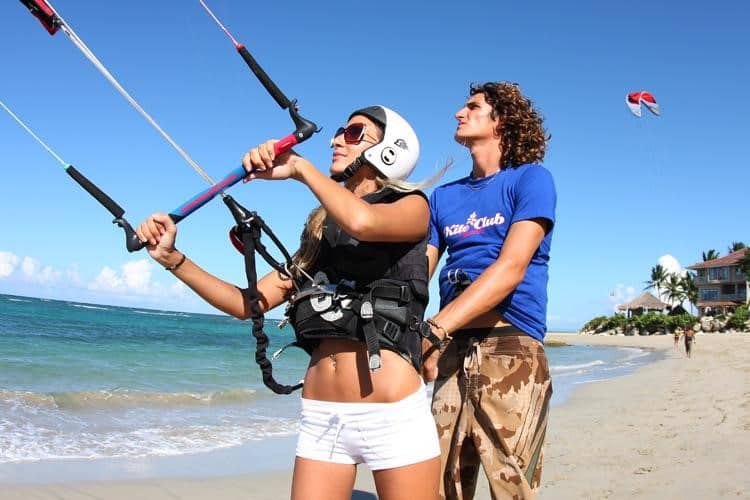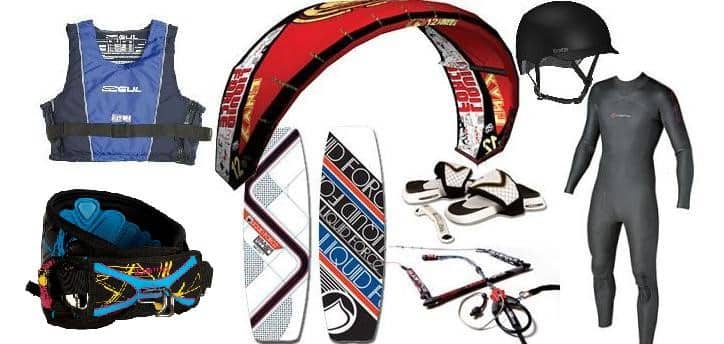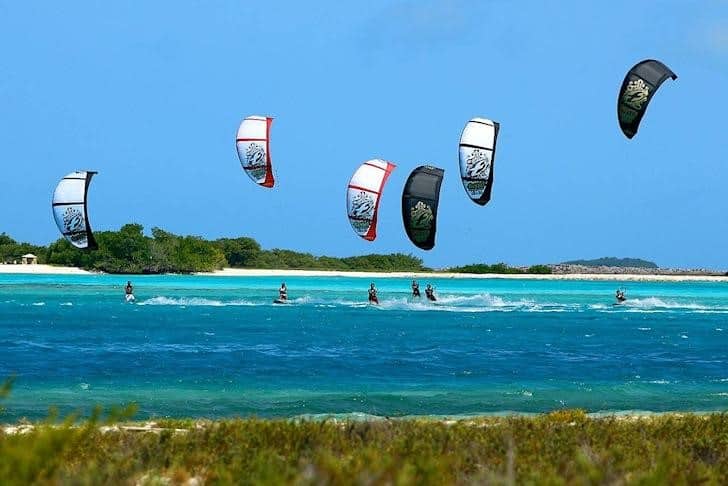A beginner’s guide to kite surfing
Kitesurfing has always been on your mind, but you never know whether you want to start, or how to start. Don’t worry, getting started is simple!
As long as you have already acknowledged a desire to get started, the rest comes down to ensuring that you have done the proper research in terms of equipment, training, safety and of course, the best places to catch a wave!

Before you start planning your first kitesurfing adventure, keep in mind a few considerations:
Firstly, kitesurfing is for people who have a love for thrill and exhilaration. While it can be difficult to learn, you don’t necessarily have to be young and strong to start, granted you are in a decent physical condition (even kids can learn!).
Secondly, kitesurfing can be dangerous if you don’t follow proper training and guidelines, so don’t risk your well-being, and make sure you take the proper precautions.
And lastly, kiteboarding is a bit more on the pricey side for a hobby sport, especially in the beginning, however, once you get going and start to really enjoy yourself you can look back and think of it as a great investment.
TRAINING COURSES
Modern advances in kiteboarding gear have made the sport easier to learn than ever. The most difficult aspect of the sport is learning to control the kite, so you must take lessons! With the proper training, kiteboarding should be much safer and easier to learn.

In a beginner training course, following the rules and guidelines are paramount to ensuring your safety and wellbeing.
Of course, you want to leave your safety in the hands of a certified professional, so ensure that the kitesurfing training facility of your choice is International Kiteboarding Association (IKA) certified.
As well as learning the actual sport, your training course should provide you with information regarding weather conditions appropriate for kitesurfing, the type of equipment you need and everything else you need to know to ensure that you won’t ever put yourself at risk.
Of course, the only way to get better is practice! So don’t feel disheartened if your initial experience is not as easy as you would expect.
EQUIPMENT
Should you be buying or renting your equipment?
As a beginner, the most seemingly practical solution would be to rent. Kitesurfing equipment isn’t cheap, so once you have made your purchase, you need to commit to the sport, otherwise, you just emptied your wallet out for nothing. However rental equipment also comes with a great deal of liability, so there is a higher level of risk on your part!
Renting equipment is good for kitesurfing without the commitment. However, if you want to take the sport a little more seriously, the best option is probably to buy.
Buying good-quality used equipment might also be a cost-effective solution to a beginner who might still be unsure about the sport.
Here is a list of equipment you will need to begin your kiteboarding journey:
1. THE KITE
Before purchasing your first kite, first, take into consideration the kind of environmental conditions you plan to kitesurf in. What will your usual kiting spot look like? Also, take into consideration your size as an individual. These factors will influence the size of the kite.
Once you know these conditions, you want to have two different kites: a bigger one for low winds and a smaller one for stronger winds. If you can only afford to have one, for the time being, go for the bigger one first, as it will be safer and easier to learn on.
You want to start off with a training kite. However, once you get a bit more comfortable, you can move onto more complex equipment.
Kite sizes will vary from 4 to 19 metres, and you need to ensure you buy a complete kite including the lines, bar, safety systems, pump and carry bag.
2. KITEBOARD
Not to be confused with a wakeboard, this board is usually fitted with foot straps rather than bootstraps. As a beginner, you want to go with a bigger board.

3. HARNESS
Find a well-fitting harness, as it is connected to your body, you’ll be able to tell whether or not you’ve found the right one. There are many different types of harnesses suited to your individual kiteboarding style.
4. IMPACT/FLOATATION VEST
Especially as a beginner, you want some sort of floatation or impact protection. It never hurts to ensure that you stay safe when events take a turn for the worst.
5. WETSUIT/ OTHER WEATHER SAFETY EQUIPMENT
Depending on the temperature of the environment, you may or may not need this. However, if you know you’re going to be kiting in colder climates, you don’t want to risk hypothermia.
6. SUNSCREEN
The Australian sun is merciless, and while kiting you are going to be exposed to a lot of it. There is also a special sunscreen you can buy which is designed for water sports. Ensure you protect yourself with a generous amount before heading out to the water.
7. ROOF RACK
Once you get fully into kitesurfing, it’s no secret that you will have A LOT of equipment. If you don’t live near a good kitesurfing spot, the transportation of your equipment could be a big issue. This is where a good quality roof rack could come in handy. It solves the issue of space, keeping your gear secure and keeping wet equipment out of your car.
THE BEST SURFING SPOTS
Australia is known to be a kitesurfing paradise, with over 35,877 km of coastline, waves winds and flat water lakes for enthusiasts of all ages and skill levels.

In Western Australia, you have Safety Bay and Margaret River.
Queensland presents Noosaville, Port Douglas, Agnes Waters and Brighton Beach as prime kiting locations.
In New South Wales you have Old Bar and in Victoria, you have West Beach.
If you enjoyed this, we recommend the following:
- Check out the best surfing spots on the East Coast
- Accessories you’ll need before you head out on the water
- Our range of roof racks so you can get your board to the water
Last updated: 17th February 2017